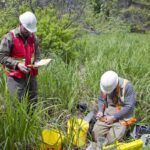Panel Recommends Shift from Environmental Assessment to Impact Assessment

On April 5, 2017, an expert panel established by the Minister of Environment and Climate Change released its report, Building Common Ground ‘ A New Vision for Impact Assessment in Canada. The panel’s mandate was to immediately review environmental assessment (EA) processes with three objectives:
- Restoring public trust in EA
- Introducing new, fair processes; and
- Getting resources to market.
One of the Panel’s key conclusions was that assessment processes must move beyond the bio-physical environment to encompass all impacts likely to result from a project, both positive and negative. That is, what’s now ‘environmental assessment’ should become ‘impact assessment’ (IA). Changing the name of the federal process underscores the shift in thinking necessary to enable practitioners and Canadians to understand the substantive changes proposed in the report.
The Panel also found that any new effective assessment process must be governed by four fundamental principles’IA processes must be transparent, inclusive, informed and meaningful. In addition, the scope of these assessments should be broadened to consider the five pillars of sustainability: environmental, economic, social, cultural and health.
IA aims to identify and address potential issues and concerns early in the design of projects, plans and policies. By so doing, it can contribute to the creation of positive relationships among various interest groups. IA also aims to contribute to the protection of the bio-physical environment and the long-term well-being of Canadians by gathering proper information to inform decision-making.
At a project scale, IA should improve project design and ensure appropriate mitigation measures and monitoring programs are implemented. In sum, IA processes should give Canadians confidence that projects, plans and policies have been adequately assessed.
Federal IAs require clear direction on both the purpose and parameters of the process. In considering the future of IA in Canada, it’s necessary to begin by answering these fundamental questions through a consideration of jurisdiction, significance and sustainability, and IA’s role as a planning tool:
- What should require federal IA’
- When should a federal IA for a project, plan or policy begin’
- What should federal IA look at’
Regarding the purpose of IA, the Panel recommends that:
- Federal interest be central in determining whether an IA should be required for a given project, region, plan or policy.
- Federal IA should begin with a legislated Planning Phase that, for projects, occurs early in project development before design elements are finalized.
- Sustainability be central to IA. The likelihood of consequential impacts on matters of federal interest should determine whether an IA would be required.
- Federal IA decide whether a project should proceed based on that project’s contribution to sustainability.
- IA laws require the use of strategic and regional IAs to guide project IA.
The public may provide comments on the report and it’s recommendations until May 5, 2017.
For more on environmental assessments in general, see these OHS Insider resources:
- 12 Pillars of a New Canadian Environmental Assessment Framework
- Traps to Avoid: Closing Down a Facility Without an Environmental Assessment
- Dos & Don’ts: Don’t Start Work Before Environmental Assessment Is Complete.
[box]
Want access to all the Canadian safety and environmental compliance resources that the OHS Insider has to offer on climate change and other topics, such as due diligence, spill prevention and response, and WHMIS 2015′ Sign up for a free trial membership now! [/box]